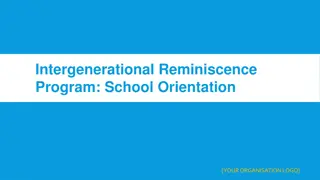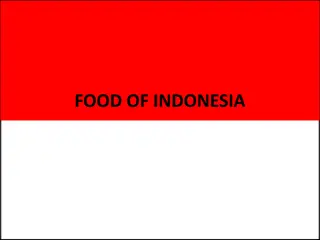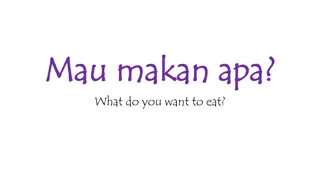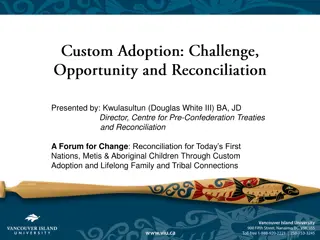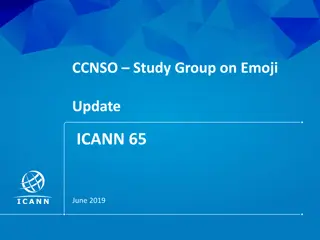Understanding Emoji Use in Indonesian Intergenerational Family WhatsApp Group
Emojis play a significant role in communication, with research showing their increasing use across generations and genders. Different research reports highlight varying emoji usage patterns among age groups and genders. This study focuses on emoji use in an Indonesian intergenerational family WhatsApp group, exploring the types of emojis used and their functions based on participants' age and gender. Data analysis will categorize emoji functions using Li and Yang's taxonomy.
Download Presentation

Please find below an Image/Link to download the presentation.
The content on the website is provided AS IS for your information and personal use only. It may not be sold, licensed, or shared on other websites without obtaining consent from the author. Download presentation by click this link. If you encounter any issues during the download, it is possible that the publisher has removed the file from their server.
E N D
Presentation Transcript
EMOJIS IN INDONESIAN INTERGENERATIONAL FAMILY WHATSAPP GROUP Ihsan Nur Iman Faris
EMOJI IS PERVASIVE Research suggests that the use of emojis keeps increasing (Li and Yang, 2018) and is positively responded as it is perceived to increase responsiveness, playfulness, and closeness in communication (Coyle and Carmichael, 2019; Prada et al., 2018; Riordan, 2017.)
IT IS NOT NEW Pictorial representations have been used by society since ancient times (Jones, 2015; McIntyre, 2016 cited in Alshenqeeti, 2016)
DIFFERENT RESEARCH REPORTS Nishimura (2015 cited in Alshenqeeti, 2016) reports that females, especially older participants, used emojis more frequently than younger females and males in general. Prada et al. (2018) reports that young females use emojis more frequently than old females and males in general.
FOCUS ON ONE AND ONE COMMUNICATION, SURVEY, AND SELF-REPORTING Additionally, much of the research on correlation between gender and age on the emoji use is also employed by surveys or participants' self-reporting of their one on one interaction (Riordan, 2017). The use of emoji in larger groups might encourage different patterns of communication such as turn- taking (Li and Yang, 2018).
RESEARCH QUESTIONS What emojis are used by members from different age and gender in the WhatsApp group? What are the functions of emojis used by members from different age and gender in the WhatsApp group?
PARTICIPANTS Age Total No Gender 21-25 26-30 31-35 36-40 41-45 46-50 51-55 56-60 61-65 66-70 1 Men 5 5 5 2 2 3 2 2 26 2 Women 2 4 1 2 1 3 1 1 1 16 Total 5 7 9 3 2 3 6 3 3 1 42
DATA ANALYSIS What emojis: https://emojipedia.org/whatsapp/
DATA ANALYSIS the use of emojis will be categorized based on Li and Yang (2018) emoji function taxonomy, categorizing the function into 1) 2) 3) attitude/emotion signal, attitude/emotion intensity enhancer, illocutionary force modifier, 4) 5) 6) humor, irony, turn-taking/giving, and 7) backchannel device
DATA ANALYSIS [There is a photo of WI, SA and SR s father, here] BY We are visiting grandma in Majalaya WE How is grandma? MU No one takes care of you anymore, Mr. government secretary, you retired only for one month, then you look much older now BY Good, aunty. Honey (to her husband MU), please SA MU, that s my father, you know MU WE What a pity, Mr. government secretary SR WE Well, we should understand that now he is really into birds, so I feel he looks quite different from before. Hehe
DISCUSSIONS In terms of cultural context, as non-verbal cues vary from one culture to another, the forms of emojis used by people should be different as well (Cheng, 2017). The set of emojis in WhatsApp are not tailor-made only for specific culture.
DISCUSSIONS Older generations also use emojis in communication. Based on the emoji use, can we say that men are more direct than women when communicating? Fewer uses of emojis by young generation in the WhatsApp group might also relate to power relations.










